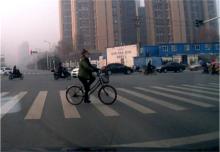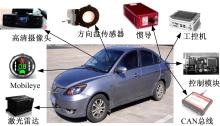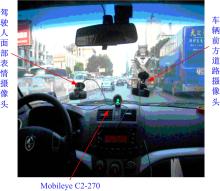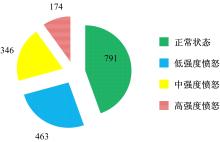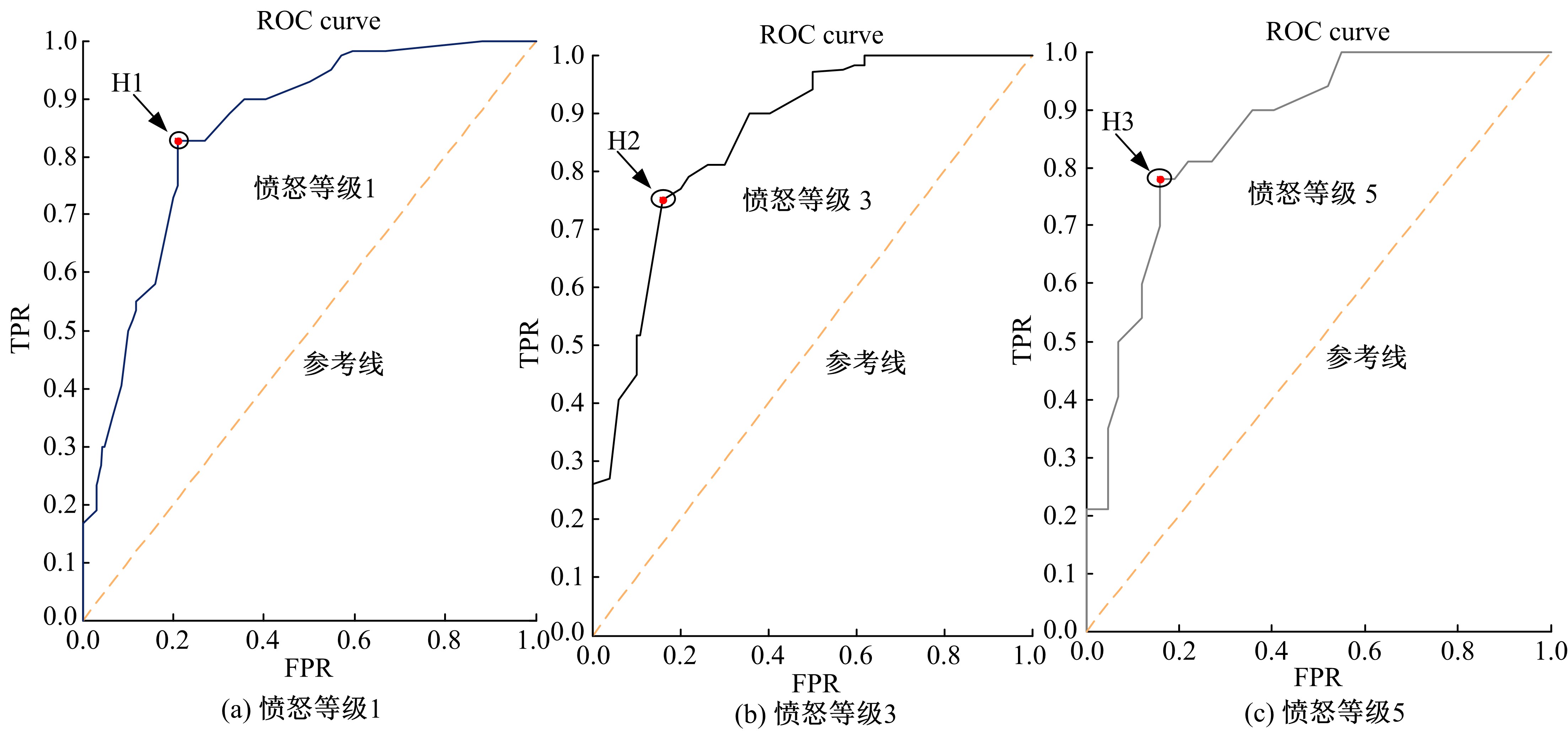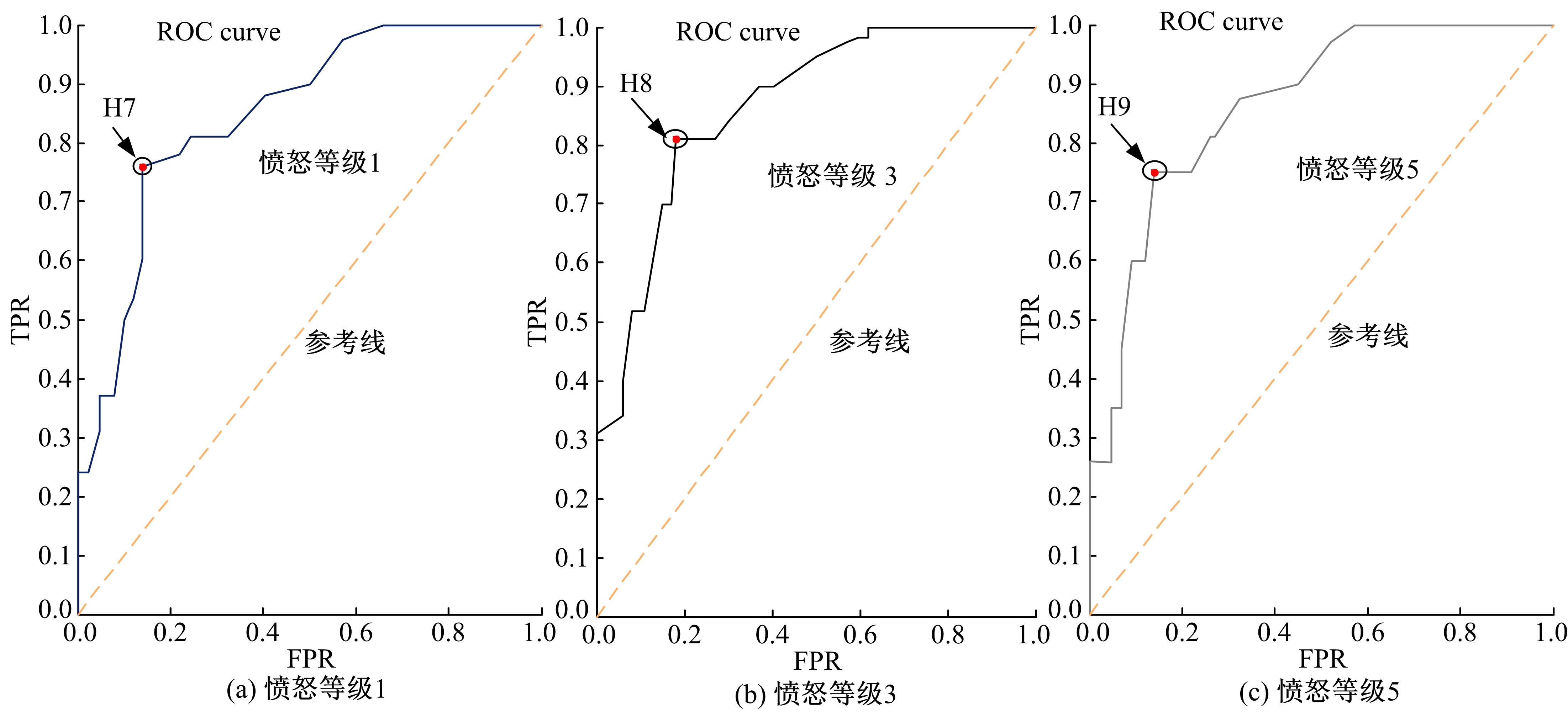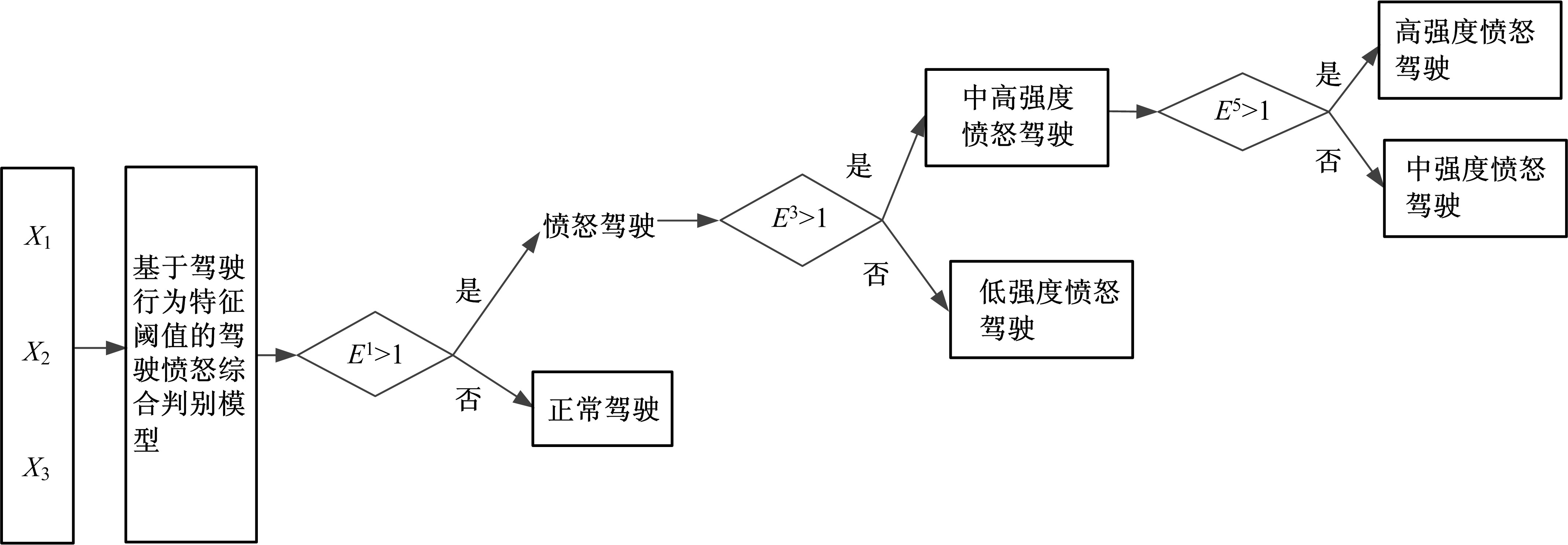Journal of Jilin University(Engineering and Technology Edition) ›› 2020, Vol. 50 ›› Issue (1): 121-131.doi: 10.13229/j.cnki.jdxbgxb20180918
Discriminating threshold of driving anger intensity based on driving behavior features by ROC curve analysis
Ping WAN1,2( ),Chao-zhong WU2,Xiao-feng MA2(
),Chao-zhong WU2,Xiao-feng MA2( )
)
- 1. School of Transportation and Logistics, East China Jiaotong University, Nanchang 330013, China
2. Intelligent Transport Systems Research Center, Wuhan University of Technology, Wuhan 430063, China
CLC Number:
- U491
| 1 | 吴超仲,雷虎 . 汽车驾驶愤怒情绪研究现状与展望[J]. 中国安全科学学报, 2010, 20(7): 3-8. |
| Wu Chao-zhong , Lei Hu . Review on the study of motorists’ driving anger[J]. China Safety Science Journal, 2010, 20(7):3-8. | |
| 2 | Kotinas I . Traffic safety facts: a compilation of motor vehicle crash data from the fatality analysis reporting system and the general estimates system[R]. The U.S. National Highway Traffic Safety Administration, 2011. |
| 3 | 雷虎 . 愤怒情绪下的汽车驾驶行为特征及其对交通安全的影响研究[D]. 武汉: 武汉理工大学智能交通系统研究中心, 2011. |
| Lei Hu . The characteristics of angry drivingbehaviors and its effects on traffic safety [D]. Wuhan: Intelligent Transport Systems Research Center, Wuhan University of Technology, 2011. | |
| 4 | Feng Zhong-xiang , Lei Ye-wei , Liu Hong-chao , et al . Driving anger in China: a case study on professional drivers[J]. Transportation Research Part F: Traffic Psychology and Behavior, 2016, 42: 255-266. |
| 5 | Dahlen E R , Martin R C , Ragan K , et al . Driving anger, sensation seeking, impulsiveness, and boredom proneness in the prediction of unsafe driving[J]. Accident Analysis and Prevention, 2005, 37(2): 341-348. |
| 6 | 张迪, 万柏坤, 明东 . 基于生理信号的情绪识别研究进展[J]. 生物医学工程学杂志, 2015, 32(1): 229-234. |
| Zhang Di , Wan Bai-kun , Ming Dong . Research progress on emotion recognition based on physiological signals[J]. Journal of Biomedical Engineering, 2015, 32(1): 229-234. | |
| 7 | Paschero M , Vescovo G , Benucci L , et al . Real time classifier for emotion and stress recognition in a vehicle driver[C]∥IEEE International Symposium on Industrial Electronics,Hangzhou,China, 2012: 1690-1695. |
| 8 | Kamaruddin N , Wahab A . Driver behavior analysis through speech emotion understanding[C]∥IEEE Intelligent Vehicles Symposium University of California, San Diego, USA, 2010: 238-243. |
| 9 | Katsis C D , Goletsis Y , Rigas G , et al . A wearable system for the affective monitoring of car racing drivers during simulated conditions[J]. Transportation Research Part C: Emerging Technologies, 2011, 19(3): 541-551. |
| 10 | Rebolledo-Mendez G , Reyes A , Paszkowicz S , et al . Developing a body sensor network to detect emotions during driving[J]. IEEE Transactions on Intelligent Transportation Systems, 2014, 15(4): 1850-1854. |
| 11 | Kessous L , Castellano G , Caridakis G . Multimodal emotion recognition in speech-based interaction using facial expression, body gesture and acoustic analysis[J]. Journal on Multimodal User Interfaces, 2010, 3(1): 33-48. |
| 12 | Cai H , Lin Y , Mourant R . Study on driver emotion in driver-vehicle-environment systems using multiple networked driving simulators[C]∥Driving Simulation Conference, Iowa City, Iowa, America, 2007: 1-8. |
| 13 | 万平,吴超仲,林英姿,等 . 基于置信规则库的驾驶人愤怒情绪识别模型[J]. 交通运输系统工程与信息, 2015, 15(5): 96-102. |
| Wan Ping , Wu Chao-zhong , Lin Ying-zi , et al . A recognition model of driving anger based on belief rule base[J]. Journal of Transportation Systems Engineering and Information Technology, 2015, 15(5): 96-102. | |
| 14 | 刘鹏 . 融合面部表情和语音的驾驶员路怒症识别方法研究[D]. 镇江:江苏大学计算机科学与通信工程学院,2017. |
| Liu Peng . Driver road rage recognition by combining facial expression and speech[D]. Zhenjiang: School of Computer Science and Telecommunication Engineering, Jiangsu University, 2017. | |
| 15 | Herrero-Fernánde D . Psychometric adaptation of the driving anger expression inventory in a Spanish sample: differences by age and gender[J]. Transportation Research Part F: Psychology and Behavior, 2011, 14(4): 324-329. |
| 16 | 万平,吴超仲,林英姿,等 . 基于驾驶行为多元时间序列特征的愤怒驾驶状态检测[J]. 吉林大学学报: 工学版, 2017, 47(5): 1426-1435. |
| Wan Ping , Wu Chao-zhong , Lin Ying-zi , et al . Driving anger detection based on multivariate time series features of driving behaviors[J]. Journal of Jilin University(Engineering and Technology Edition), 2017, 47(5): 1426-1435. | |
| 17 | Chen Zhi-jun , Wu Chao-zhong , Zhong Ming , et al . Identification of common features of vehicle motion under drowsy/distracted driving a case study in Wuhan China[J]. Accident Analysis and Prevention, 2015, 81: 251-259. |
| 18 | 陈卫中,倪宗瓒,潘晓平,等 .用ROC曲线确定最佳临界点和可疑值范围[J]. 现代预防医学, 2005, 32(7) : 729-731. |
| Chen Wei-zhong , Ni Zong-zan , Pan Xiao-ping , et al . Receiver operating characteristic curves to determine the optimal operating point and doubtable value interval[J]. Modern Preventive Medicine, 2005, 32(7): 729-731. | |
| 19 | Bechtel T , Capineri L , Windsor C , et al . Comparison of ROC curves for landmine detection by holographic radar with roc data from other methods[C]∥IEEE 8th International Workshop on Advanced Ground Penetrating Radar,Florence,Italy,2015:1-4. |
| [1] | Sheng-tong DI,Chao JIA,Wei-guo QIAO,Kang LI,Kai TONG. Loading rate effect of meso⁃damage characteristics of crumb rubber concrete [J]. Journal of Jilin University(Engineering and Technology Edition), 2019, 49(6): 1900-1910. |
| [2] | Yun-long ZHANG,Liu-guang ZHOU,Jing WANG,Chun-li WU,Xiang LYU. Effects of freeze-thaw cycles on mechanical properties of silty sand and subgrade slope stability [J]. Journal of Jilin University(Engineering and Technology Edition), 2019, 49(5): 1531-1538. |
| [3] | Yong PENG,Hua GAO,Lei WAN,Gui-ying LIU. Numerical simulation of influence factors of splitting strength of asphalt mixtures [J]. Journal of Jilin University(Engineering and Technology Edition), 2019, 49(5): 1521-1530. |
| [4] | Liang JIANG,Yi HE. Risky driving behavior and influencing factors analysis for electric two⁃wheeler [J]. Journal of Jilin University(Engineering and Technology Edition), 2019, 49(4): 1107-1113. |
| [5] | Xiao⁃zhen LI,Jun⁃zhe LIU,Yan⁃hua DAI,Zhi⁃min HE,Ming⁃fang BA,Yu⁃shun LI. Effect of carbonation on nitrite ion distribution in cement paste [J]. Journal of Jilin University(Engineering and Technology Edition), 2019, 49(4): 1162-1168. |
| [6] | Tian⁃lai YU,Hai⁃sheng LI,Wei HUANG,Si⁃jia WANG. Shear strengthening of reinforced concrete beam with prestressed steel wire ropes [J]. Journal of Jilin University(Engineering and Technology Edition), 2019, 49(4): 1134-1143. |
| [7] | Xiao⁃ming HUANG,Qing⁃qing CAO,Xiu⁃yu LIU,Jia⁃ying CHEN,Xing⁃lin ZHOU. Simulation of vehicle braking performance on rainy daysbased on pavement surface fractal friction theory [J]. Journal of Jilin University(Engineering and Technology Edition), 2019, 49(3): 757-765. |
| [8] | Jing WANG,Xiang LYU,Xiao⁃long QU,Chun⁃ling ZHONG,Yun⁃long ZHANG. Analysis of relationship between subgrade soil shear strength and chemical and minerals component [J]. Journal of Jilin University(Engineering and Technology Edition), 2019, 49(3): 766-772. |
| [9] | LI Yi,LIU Li-ping,SUN Li-jun. Prediction model on rutting equivalent temperature for asphalt pavement at different depth [J]. Journal of Jilin University(Engineering and Technology Edition), 2018, 48(6): 1703-1711. |
| [10] | NIAN Teng-fei, LI Ping, LIN Mei. Micro-morphology and gray entropy analysis of asphalt characteristics functional groups and rheological parameters under freeze-thaw cycles [J]. 吉林大学学报(工学版), 2018, 48(4): 1045-1054. |
| [11] | ZANG Guo-shuai, SUN Li-jun. Method based on inertial point for setting depth to rigid layer [J]. 吉林大学学报(工学版), 2018, 48(4): 1037-1044. |
| [12] | GONG Ya-feng, SHEN Yang-fan, TAN Guo-jin, HAN Chun-peng, HE Yu-long. Unconfined compressive strength of fiber soil with different porosity [J]. 吉林大学学报(工学版), 2018, 48(3): 712-719. |
| [13] | CHENG Yong-chun, BI Hai-peng, MA Gui-rong, GONG Ya-feng, TIAN Zhen-hong, LYU Ze-hua, XU Zhi-shu. Pavement performance of nano materials-basalt fiber compound modified asphalt binder [J]. 吉林大学学报(工学版), 2018, 48(2): 460-465. |
| [14] | MA Ye, NI Ying-sheng, XU Dong, DIAO Bo. External prestressed strengthening based on analysis of spatial grid model [J]. 吉林大学学报(工学版), 2018, 48(1): 137-147. |
| [15] | ZHANG Yang-peng, WEI Hai-bin, JIA Jiang-kun, CHEN Zhao. Numerical evaluation on application of roadbed with composite cold resistance layer inseasonal frozen area [J]. 吉林大学学报(工学版), 2018, 48(1): 121-126. |
|
||


